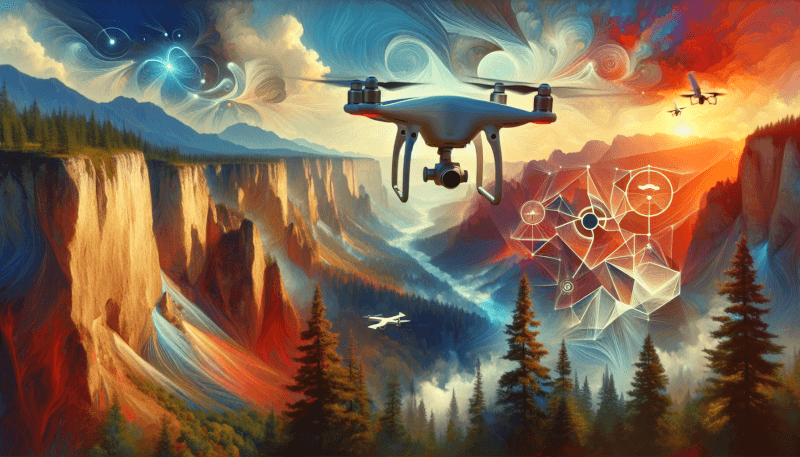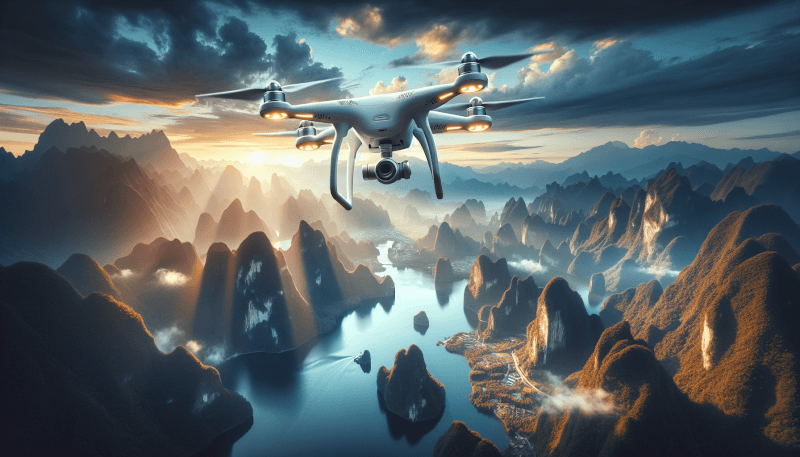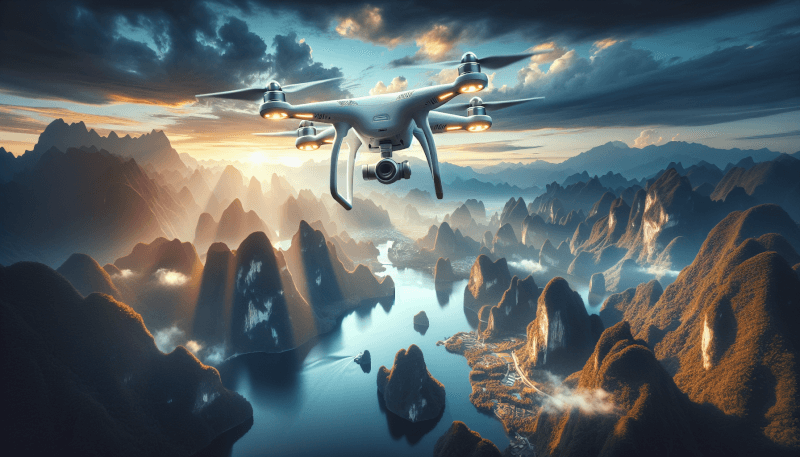So, you’ve decided to take to the skies and fly a drone? Exciting times ahead! Before you launch into this exhilarating hobby, it’s important to familiarize yourself with the common mistakes that beginners often make. From neglecting to register your drone to flying in restricted airspace, this article will guide you through the ten most prevalent errors to avoid when flying a drone. Buckle up, because we’re about to navigate the world of drone flying with ease and finesse.

Not familiarizing yourself with the drone
When you first get your hands on a new drone, it can be tempting to skip right over the user manual and dive into flying. However, this is a crucial mistake that many new drone owners make. The user manual is there for a reason – it contains important information about the specific features and functions of your drone. By not taking the time to read through it, you may miss out on key details that could enhance your flying experience and prevent potential accidents. Additionally, it’s important to familiarize yourself with the drone’s specifications, such as its weight, battery life, and maximum flight time, as this will help you understand its limitations and capabilities. Finally, take the time to understand the controls of your drone. Each drone model may have slight variations in how the controls operate, so taking the time to learn and practice using them will ensure a smoother flying experience.
Flying without proper registration and permits
Before you take to the skies with your drone, it’s important to understand the regulations and requirements set by the relevant authorities in your country. Many countries now require drone owners to register their drones and obtain a permit to fly them, especially if the drone weighs above a certain threshold. Failure to do so can result in fines or legal consequences. By taking the time to research and understand the drone regulations in your area, you can ensure that you are flying within the legal limits. Additionally, if you plan to fly your drone in specific locations, such as national parks or near airports, you may need to obtain special permits. This not only ensures compliance with the law but also helps to prioritize safety and prevent accidents in sensitive areas.

Overlooking pre-flight checks
In the excitement of getting your drone up in the air, it can be easy to overlook the importance of conducting pre-flight checks. These checks are essential for ensuring that your drone is in optimal condition and that there are no potential issues that could lead to accidents or malfunctions. One of the most important pre-flight checks is checking the battery life. Flying with a low battery can result in your drone losing power mid-flight and crashing. Additionally, verifying the GPS signal is crucial for ensuring accurate positioning and stable flight. Inspecting the propellers and connections is also important, as loose or damaged parts can lead to instability or even failure in mid-air. Lastly, ensure that the camera and gimbal are functioning properly, as these are integral components for capturing high-quality aerial footage.
Underestimating weather conditions
When it comes to flying a drone, weather conditions play a significant role in flight safety and stability. Before taking off, it is essential to check the wind speed and direction. Strong winds can make it difficult to control your drone and increase the risk of crashes. Similarly, flying in adverse weather conditions such as rain, snow, or fog can impair visibility and reduce the drone’s performance. Additionally, temperature and humidity can affect the battery life and overall functionality of your drone. Extreme temperatures, especially cold weather, can shorten the battery life and impact the drone’s performance. By considering these factors and avoiding flying in unfavorable weather conditions, you can ensure a safer and more enjoyable flying experience.

Neglecting to plan the flight path
Planning your flight path is a crucial step when flying a drone. By identifying safe and legal areas for flying, you can avoid obstacles, maintain visual line of sight, and minimize the risk of accidents. It’s important to research and understand any restricted airspace in your area, such as near airports or military bases, to comply with regulations and avoid potential penalties. Additionally, mapping out your flight path before taking off can help you identify any potential obstacles or hazards, such as trees, power lines, or buildings. By having a clear plan in mind, you can focus on flying and capturing footage without the worry of unexpected obstacles getting in your way.
Ignoring battery management and flight time
Battery management is crucial when flying a drone. Ignoring this aspect can lead to crashes and damage to your drone. It’s important to monitor battery levels during flight to ensure you have enough power to safely return your drone. Flying until the battery is completely drained can lead to a “forced landing” where the drone loses power and falls from the sky. This not only puts your drone at risk but also poses a danger to people and property below. Make sure to calculate the flight time of your drone based on its battery life and plan your flights accordingly. By managing your battery properly, you can avoid potential accidents and prolong the lifespan of your drone.

Flying too far or too high
While it may be tempting to push the limits of your drone’s capabilities, flying too far or too high can lead to trouble. Most countries have regulations in place that require drones to be flown within visual line of sight, meaning you should always be able to see your drone while it’s in flight. This is crucial for maintaining control and avoiding collisions with other objects in the sky. Additionally, there are legal altitude limits that you need to be aware of. Exceeding these limits can not only result in fines but also pose a danger to other aircraft. It’s important to understand your drone’s range capabilities and abide by the established regulations to ensure safe and responsible flying.
Not considering privacy and respect for others
Flying a drone comes with a responsibility to respect the privacy and property of others. It’s important to be mindful of your surroundings and avoid flying in areas where you may infringe upon people’s privacy. Keep a safe distance from homes, private property, and individuals who may not want to be recorded or photographed. Additionally, be conscious of sensitive areas such as government buildings, military installations, or wildlife sanctuaries, where flying a drone may be prohibited or pose a threat to security. By respecting the privacy of others and avoiding restricted areas, you contribute to a positive image of drone flyers and prevent potential conflicts or legal issues.

Forgetting to update firmware and software
Just like any other electronic device, drones require regular maintenance and updating to ensure optimal performance. Many drone manufacturers release firmware updates that address bugs, enhance stability, and introduce new features. It’s important to regularly check for firmware updates and apply them to your drone. Similarly, updating the drone’s software, such as the app or controller firmware, can improve functionality and compatibility with accessories. By keeping your drone’s firmware and software up to date, you can enjoy a more reliable and efficient flying experience.
Lacking proper flying skills and practice
Mastering the art of flying a drone takes time and practice. While it may be tempting to take your drone out for a spin without any prior knowledge or training, this can lead to accidents and frustration. Consider taking flight training or watching tutorials that teach you the basics of drone flying. Practicing in open and controlled environments, such as parks or designated flying areas, can help you gain confidence and improve your flying skills. It is important to practice basic maneuvers such as hovering, ascending, descending, and turning, as well as emergency procedures like landing safely in case of unexpected circumstances. By investing time in developing your flying skills, you can ensure a more enjoyable and successful drone piloting experience.
In conclusion, flying a drone can be an exhilarating and rewarding experience, but it’s important to avoid common mistakes that can lead to accidents, legal issues, or damage to your drone. By familiarizing yourself with your drone, understanding the regulations, conducting pre-flight checks, considering weather conditions, planning your flight path, managing your battery, respecting privacy, updating firmware and software, and investing time in practice, you can become a responsible and skilled drone pilot. So remember, take the time to learn, prepare, and fly safely for a fulfilling and enjoyable drone flying experience.


